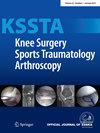Open surgical repair as gold standard for acute Achilles tendon ruptures: Systematic review and network meta-analysis
Abstract
Purpose
Both surgical and non-surgical treatments for acute Achilles tendon ruptures (aATRs) exist, but the optimal management strategy, especially regarding weight-bearing timing, remains unclear. This study investigates combinations of primary treatment (open surgical repair, percutaneous/minimally invasive repair and non-surgical treatment) and rehabilitation strategies (Early Weight Bearing [EWB] vs. Late Weight Bearing [LWB]) for aATRs, analysing re-rupture risk, complication rates and recovery outcomes.
Methods
Systematic review and network meta-analysis registered in PROSPERO (CRD42023389413). Medline, Scopus, Web of Science, CINAHL, ClinicalTrials.gov, and Cochrane Library were searched for studies assessing primary treatments and rehabilitation strategies for aATR in adults (>18 years old) with at least six months of follow-up.
Results
Forty-one studies (23 randomised-controlled-trials, 17 non-randomised-studies-of-intervention) comprising 5566 patients and 82 treatment arms were included. Network meta-analysis was performed for re-rupture risk and other outcomes, reporting odds ratios and treatment rankings. Open surgical repair combined with LWB has the lowest re-rupture risk (2%, 95%CI 1%–3%). EWB facilitates faster recovery but marginally increases complication risks, though not statistically significant. Non-surgical treatment shows a higher re-rupture rate than surgical options (12% vs. 2%/4%, p < 0.001). Major wound complications are rare (2.8%), with percutaneous repair having a higher risk of sural nerve injury (4% vs. 1%, p = 0.02). Deep vein thrombosis/pulmonary embolism risk is higher with non-surgical treatment (2% vs. 1%, p = 0.04). EWB leads to faster return-to-sport and higher Achilles Tendon Rupture Scores.
Conclusions
Open surgical repair with LWB reduces re-rupture risk, while EWB offers faster recovery and higher patient satisfaction. Non-surgical treatment has the highest re-rupture and DVT/PE risk. Percutaneous repair increases sural nerve injury risk compared to open surgery, with no significant difference in wound complications. In patients with no contraindications, open surgical repair should be considered the gold standard, with no statistical difference in major and minor wound complications when compared to percutaneous treatment.
Level of Evidence
Level I.





 求助内容:
求助内容: 应助结果提醒方式:
应助结果提醒方式:


